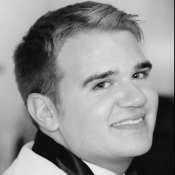I confess my introduction to Federico Garcia Lorca’s Blood Wedding after initially reading it in university was befuddling, to say the least. I remember not knowing where to begin: the more I tried to grasp the text, the more its lines seemed to slip through my fingers. I sat with wide eyes in the professor’s office, clutching my copy of the play. Wait, the moon…is a character?
As a result, I approached viewing Modern Times Stage Company and Aluna Theatre’s co-production of the play, which closed at Buddies this past weekend, with some trepidation. But what I learned was how constantly we need to remind ourselves of the doubled nature of theatre—how it exists in both textual and performative modes. Reading Lorca is one thing. Experiencing Lorca is quite another.
Blood Wedding tells of the tragic consequences that arise in a rural Spanish community when a just-married bride runs away with Leonardo, her former sweetheart and the son of an enemy family. Brutality haunts the piece from the very start; in the opening scene, a mother bemoans the cruel fates that have already befallen her husband and one of her sons, and cries out “Damn the knife, damn all knives!” The violence only seems to spread, and the forbidden couple’s actions after the titular wedding bring the narrative to a horrifying climax. Despite strong feelings of foreboding, neither Leonardo nor the bride appears able to avoid what fate has in store for them. “I didn’t want to,” the bride explains, “but the other’s arm dragged me…and it would always have dragged me, always.”
Soheil Parsa’s direction brought out the richness in Lorca’s dialogue: as Globe and Mail reviewer J. Kelly Nestruck noted, the actors’ performances mixed “the poetic and the parodic…the riveting and the ridiculous.” Scenes depicting the lovers’ clandestine meetings or the strained atmosphere of Leonardo’s household were suitably tense, while other sequences bordered on camp. A central dance to begin the wedding, in which all performers were brought together using stylized movements, was particularly effective. Parsa was admirably supported by the design team. Scenographer Trevor Schwellnus’s set was a true standout: clouded windowpanes lined the stage, alternately revealing and concealing moments of the story. Thomas Ryder Payne’s sound design was eerily evocative, all jagged glass and galloping horse hooves, while the costumes provided by Angela Thomas were suitably both minimalist and versatile.
All of these elements elegantly combined to present audience members with a truly sensory piece. I’m grateful to have had the chance to witness Modern Times and Aluna’s production of Lorca’s play. It was a vision of Blood Wedding that cut as sharply as the characters’ vengeful blades.


